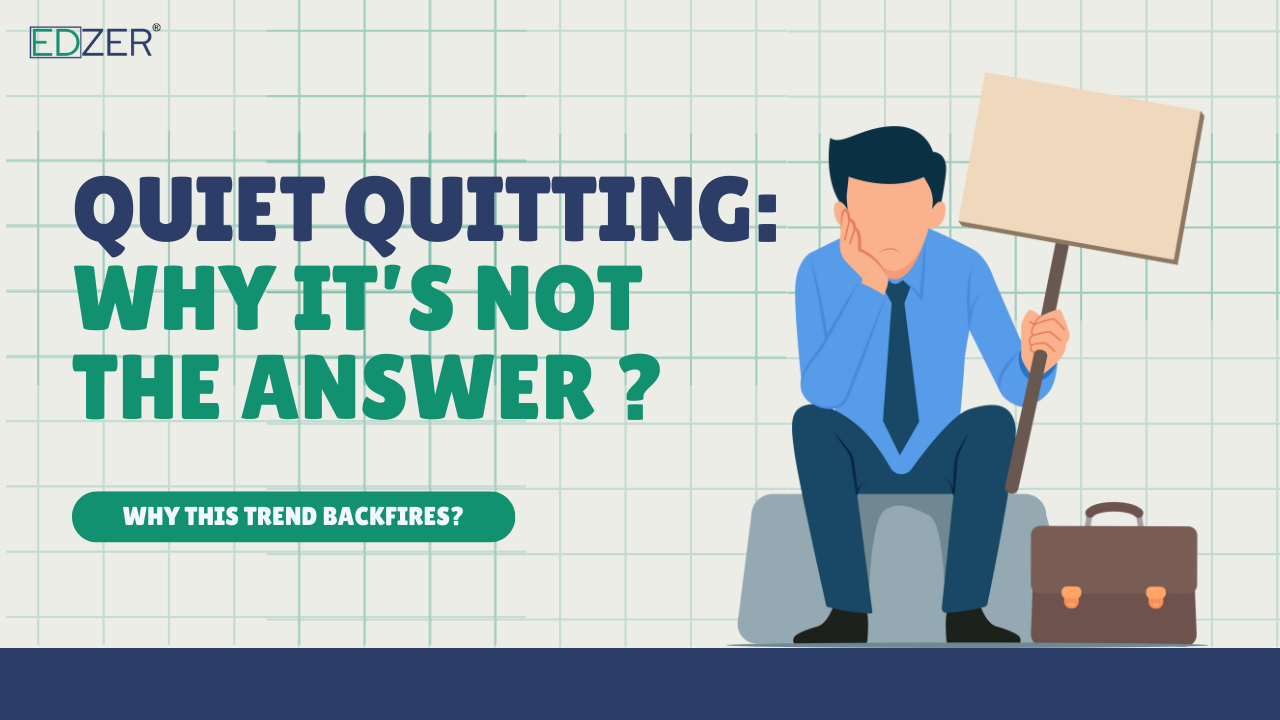“Quiet quitting” — doing exactly what your job pays you for, and nothing more — became widely discussed in 2022. For both working professionals and freshers entering the workforce, it may seem like a way to protect mental health or push back against overwork. But it’s more accurately a form of emotional disengagement or silent dissatisfaction.
According to global research, over half of employees feel disconnected from their work. Whether you’re new to the job market or several years in, this disengagement can quietly stall your growth and sense of purpose. The issue is rarely about long hours—it’s about feeling undervalued, uninspired, or misaligned with your role.
Why Quiet Quitting Didn’t Work
It masks deeper issues
For freshers, quiet quitting can start early—when expectations feel unclear or overwhelming. For experienced employees, it may stem from burnout or lack of recognition. Either way, it doesn’t fix the real problems—it only hides them.
It’s invisible and isolating
By doing the bare minimum, you avoid conflict but also miss out on being seen. Managers can’t support what they don’t know. For early-career professionals especially, this can mean missing mentorship, feedback, or trust-building opportunities.
It kills recognition and advancement
When you disengage, you’re less likely to be considered for promotions, key projects, or development programs. That’s true whether you’re climbing the ladder or just getting your foot on the first rung.
What to Do Instead: Strategies That Work
Practice “Quiet Thriving”
Instead of stepping back, lean in—on your own terms. Quiet thriving is about bringing purpose and energy into your role, even in small ways. For freshers, this could mean taking initiative on a project. For professionals, it might involve mentoring or improving a process.
Set boundaries boldly: “Loud Living”
Don’t shrink—speak up. Set clear, respectful boundaries around your time and energy. Whether you’re just starting out or managing a team, saying “no” when needed earns trust, not judgment.
Have candid conversations with leadership
Be honest about what’s working and what’s not. Ask about growth paths, learning opportunities, or clarity in your responsibilities. Managers value employees—at any level—who are proactive rather than quietly frustrated.
Adopt deep work and planning rituals
Block time for focused, meaningful work. Even a junior role has room for structure and flow. For senior employees, this is key to avoiding burnout while staying productive.
Seek meaning and connection
Look for tasks, relationships, and goals that energize you. Join workplace groups, ask questions, collaborate. Connection and purpose matter just as much as skills on your résumé.
In Summary: From Disengaged to Empowered
Whether you’re a fresher navigating your first job or a seasoned professional feeling stuck, quiet quitting is not the solution—it’s a signal. Instead:
- Embrace quiet thriving—build meaning and motivation where you are.
- Set loud boundaries—be clear, confident, and intentional.
- Speak up—don’t let silence cost you growth.
- Structure your time—protect focus and energy.
- Seek connection—care about the work and the people around it.
These steps won’t just keep you engaged—they’ll position you for long-term success, satisfaction, and visibility. Edzer invites professionals at every level to rethink quiet quitting. Don’t just do less—do better, and do it with purpose.
Let us know if you’d like help tailoring these strategies to your industry or career stage.

